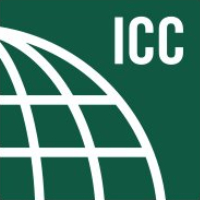
Exit lighting, emergency communication requirements in new International Fire Code
![]() New requirements in the 2009 International Fire Code (IFC) provide added protection to building occupants and emergency responders. For example, two safety features result from the lessons learned from the 9/11 tragedy: one will ensure the seamless coverage of emergency radios inside and outside buildings while a second requires special markings for emergency exits and stairwells.
New requirements in the 2009 International Fire Code (IFC) provide added protection to building occupants and emergency responders. For example, two safety features result from the lessons learned from the 9/11 tragedy: one will ensure the seamless coverage of emergency radios inside and outside buildings while a second requires special markings for emergency exits and stairwells.
The IFC addresses all aspects of fire safety in new and existing buildings and is coordinated with the entire family of International Codes. When jurisdictions adopt the 2009 IFC, they protect their communities with the most modern and comprehensive fire safety provisions available. To pre-purchase the IFC and other I-Codes, visit www.iccsafe.org/2009icodes.
Improved safety benefits of the 2009 IFC include:
- All nonsprinklered hospitals, nursing homes and other Group I-2 occupancies, including existing buildings, require automatic sprinkler protection.
- All new high-rise buildings require luminous exit pathway markings inside of building stair shafts.
- Emergency responder radio coverage is required inside buildings.
- New requirements address the use of liquid oxygen in home health care settings.
- New requirements address fire protection of marinas.
- The requirements for fire alarm and detection systems have been extensively revised and correlated to NFPA 72.
- All requirements for existing buildings have been compiled into a new chapter.
In addition, the 2009 International Residential Code (IRC)includes new provisions for residential fire sprinklers. The sprinkler requirements for one- and two-family dwellings takes effect in 2011 while the requirements for sprinkler systems in townhomes takes effect upon the adoption of the 2009 IRC.
Also of interest to fire professionals, the 2009 International Wildland-Urban Interface Code contains provisions addressing fire spread, accessibility, defensible space, water supply and more for buildings constructed near wildland areas.
The IFC, developed and published by the International Code Council, is adopted at the state or local level in 42 states and Washington, D.C. The IFC addresses conditions hazardous to life and property from fire, explosion, handling or use of hazardous materials, and building use and occupancy. Topics include fire department access, fire hydrants, automatic sprinkler systems, fire alarm systems, and hazardous materials storage and use.
The International Code Council, a membership association dedicated to building safety and fire prevention, develops the codes used to construct residential and commercial buildings, including homes and schools. Most U.S. cities, counties and states choose the International Codes, building safety codes developed by the International Code Council.







